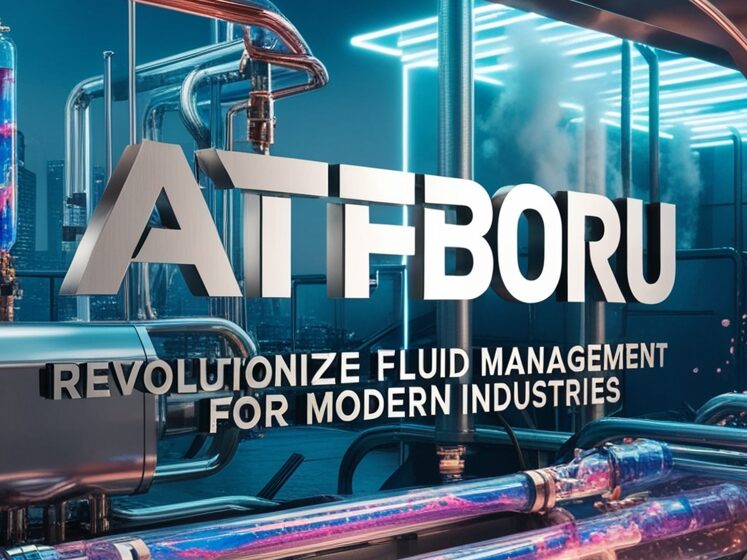Introduction
In the ever-evolving panorama of current technology, the pursuit of progressive solutions to enhance performance and performance has become paramount. One such key term that maintains to advantage traction in technical and commercial sectors is atfboru. While it may no longer be without delay recognizable to the wider public, this term holds sizable importance in niche areas related to mechanical structures, fluid control, and operational effectiveness. This article targets to delve deep into the programs, blessings, and growing relevance of atfboru, shedding mild on the way it performs a vital function in advancing industries and promoting technological innovation.
Table of Contents
What is ATFBORU?
Before we will fully respect the relevance of atfboru, it’s far vital to understand what it encompasses. Though the acronym would possibly initially appear enigmatic, atfboru refers to a selected technique or era employed in handling fluid structures, specifically in mechanical structures consisting of automatic transmissions or hydraulic system. In industries in which the seamless and efficient motion of fluids is important for operational stability, this concept is indispensable.
At its core, atfboru can relate to superior transmission fluid mechanisms, optimizing the float and management of computerized transmission fluids (ATF). These fluids are essential in making sure clean overall performance in equipment, especially in cars and industrial system wherein transmissions play a critical position. The time period atfboru may also indicate more moderen improvements or more delicate technology that enhance the effectiveness of conventional ATF structures.

The Role of Transmission Fluids in Modern Systems
The coronary heart of any mechanical transmission machine is its fluid dynamics. Without the proper fluid to lubricate, cool, and switch power inside these structures, the device could overheat, put on down fast, or fail catastrophically. Atfboru performs an imperative function in ensuring that those fluids function effectively, keeping the machine’s toughness and overall performance.
Automatic transmission fluids (ATF), as an example, have a couple of capabilities:
- Lubrication: Reducing friction between moving parts to prevent wear and tear.
- Cooling: Managing heat generated by using the machinery to avoid overheating.
- Hydraulic Function: Facilitating the go with the flow of electricity within the machine.
- Cleaning: Preventing the accumulation of sludge and polish that could degrade overall performance.
The advent of technologies like atfboru complements those roles, the use of current innovations to higher manipulate fluid houses and dynamics. This consequences in elevated efficiency, fewer breakdowns, and longer-lasting equipment.
The Industrial Application of ATFBORU
As industries end up greater reliant on computerized systems, the call for for effective fluid management has by no means been better. Atfboru technologies are being incorporated into diverse sectors, such as automotive, aerospace, manufacturing, and power, in which fluid dynamics are essential to operational success.
Automotive Industry
In modern-day cars, specially electric and hybrid cars, optimizing transmission fluids is vital to extending battery existence, enhancing overall performance, and minimizing electricity losses. By integrating atfboru structures, automotive manufacturers can improve the durability and efficiency of their transmission structures, lowering the need for common maintenance.
Aerospace
Aircraft depend closely on hydraulic structures for landing gears, brakes, and manage surfaces. Ensuring that those structures operate reliably is critical for protection. Atfboru generation contributes to the ideal control and control of fluids within these structures, improving their reliability and reducing the chance of failure in flight.
Manufacturing
In factories where big-scale equipment is used for production, fluid control guarantees non-stop, problem-unfastened operations. Through atfboru, industries can optimize their hydraulic presses, conveyors, and different system that depend upon fluid structures, growing productiveness and reducing downtime.
Energy Sector
Oil and fuel pipelines, as well as power technology systems, require green fluid control for cooling and lubrication. Atfboru technologies make contributions to the effective functioning of these systems, making sure that energy is transmitted successfully and without threat of overheating or mechanical failure.

Key Benefits of Integrating ATFBORU
The integration of atfboru technology into numerous mechanical and industrial systems gives a number of advantages, especially in enhancing performance, reducing fees, and promoting sustainability. Here are some of the number one benefits:
Increased Operational Efficiency
By optimizing the movement and characteristic of fluids, atfboru can beautify the overall overall performance of transmission systems. This interprets into smoother operation, fewer delays, and faster results, specifically in automated systems wherein precision is fundamental.
Cost Savings
Efficient fluid management reduces put on and tear on system, meaning less frequent protection and fewer element replacements. This significantly reduces operational costs over the years, presenting a sturdy go back on funding for industries that adopt atfboru technology.
Sustainability
Many contemporary atfboru solutions cognizance on lowering environmental effect by way of improving the performance of fluids, lowering waste, and reducing emissions. This is specifically crucial for industries searching for to limit their carbon footprint and comply with environmental regulations.
Longevity of Equipment:
Proper fluid control guarantees that equipment can feature with out immoderate wear. Atfboru extends the lifespan of equipment, permitting industries to apply their assets greater successfully and avoid the charges related to premature gadget failure.
The Future of ATFBORU Technologies
As technology continues to strengthen, the position of atfboru in fluid control structures will most effective develop in importance. With the increasing call for for automation, performance, and sustainability, the improvement of recent and progressive fluid manage structures will likely hold to amplify throughout industries.
Future developments in atfboru could encompass extra state-of-the-art sensors and diagnostics that permit for actual-time monitoring of fluid structures, making sure that any troubles are detected and addressed straight away. Additionally, advances in fluid chemistry could cause the creation of recent, more green transmission fluids that in addition enhance the benefits of atfboru technologies.
In sectors like car and aerospace, in which every bit of efficiency counts, atfboru will in all likelihood play a critical position within the destiny of transportation and production. As those industries retain to push the limits of what is viable, the need for strong, efficient fluid control systems might be extra crucial than ever.
Also read: Tran Maicousa: A Journey Through Innovation, Culture, and Impact
Conclusion
In end, atfboru represents a key technological development within the world of fluid management systems. Its function in optimizing transmission fluids and improving the efficiency of mechanical operations has far-reaching implications for industries that rely on those technology. From improving operational efficiency and lowering expenses to promoting sustainability and extending gadget lifestyles, the benefits of atfboru are clean.
As industries hold to evolve and are looking for out new approaches to innovate, atfboru will possibly stay a cornerstone of progress in fluid dynamics and mechanical systems, supplying the inspiration for greater superior and dependable technologies inside the years yet to come. Whether in automobile, aerospace, production, or strength, atfboru is poised to be a riding force in shaping the destiny of commercial overall performance and technological innovation.

